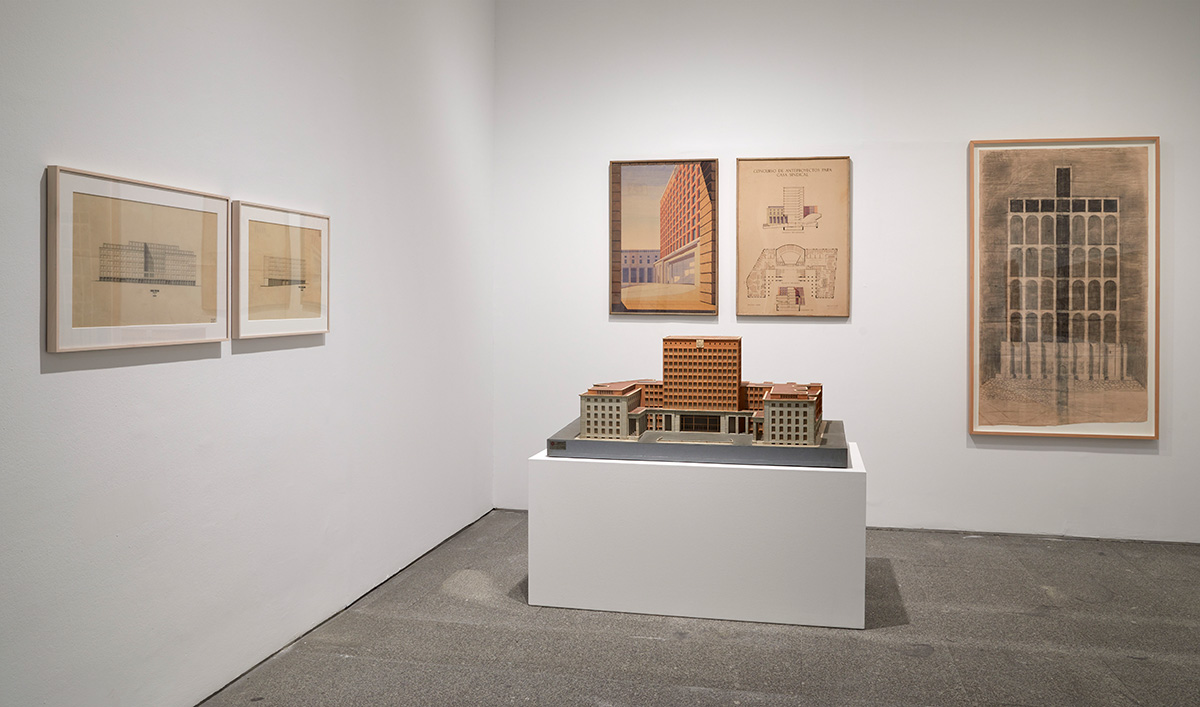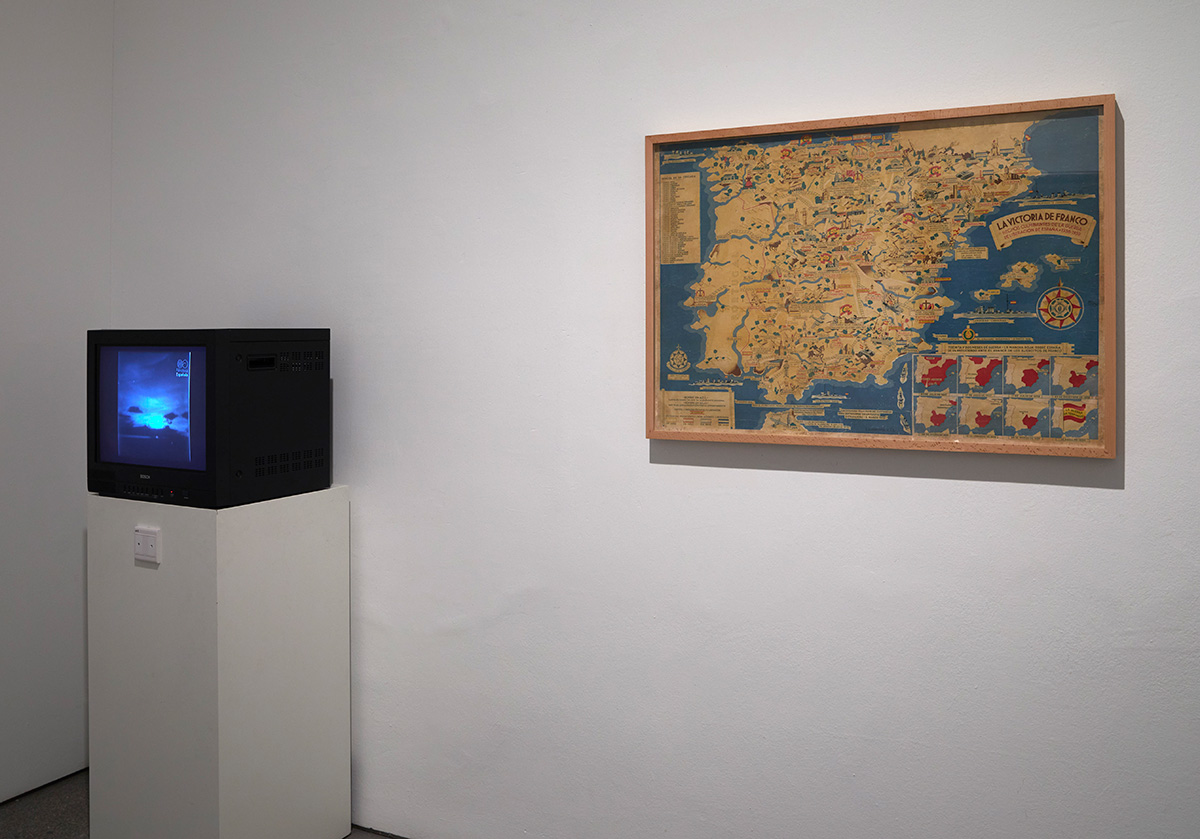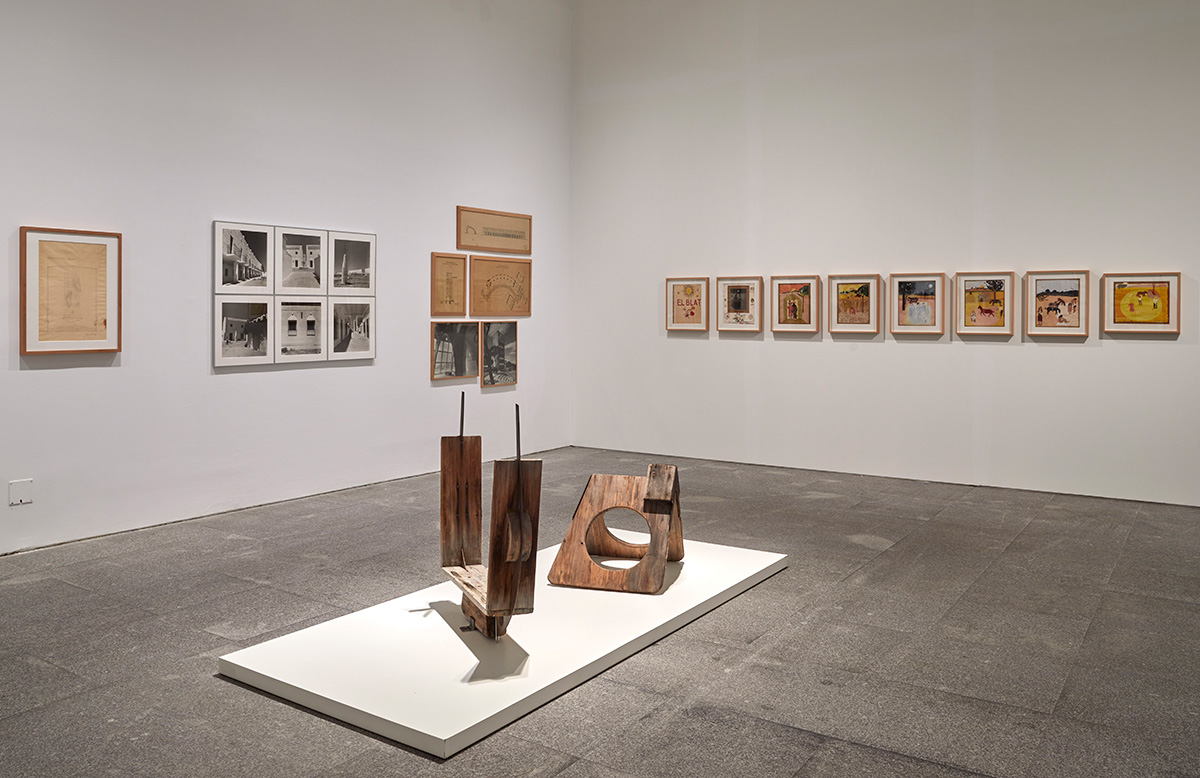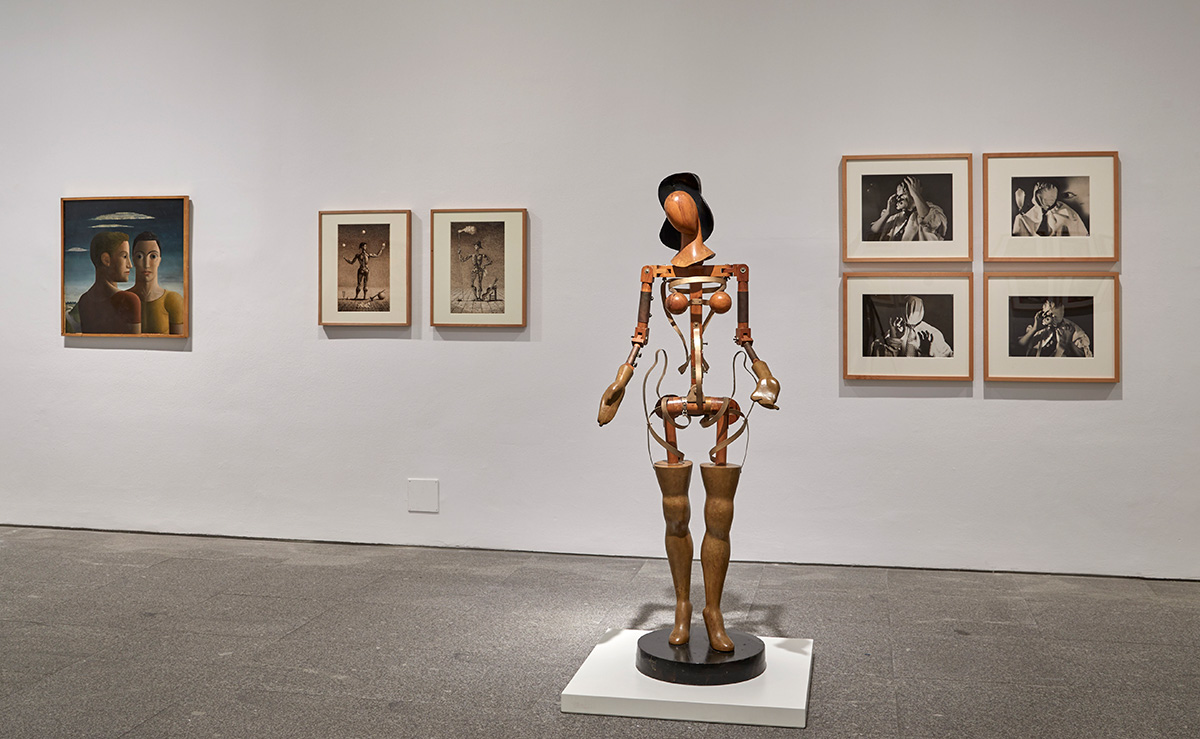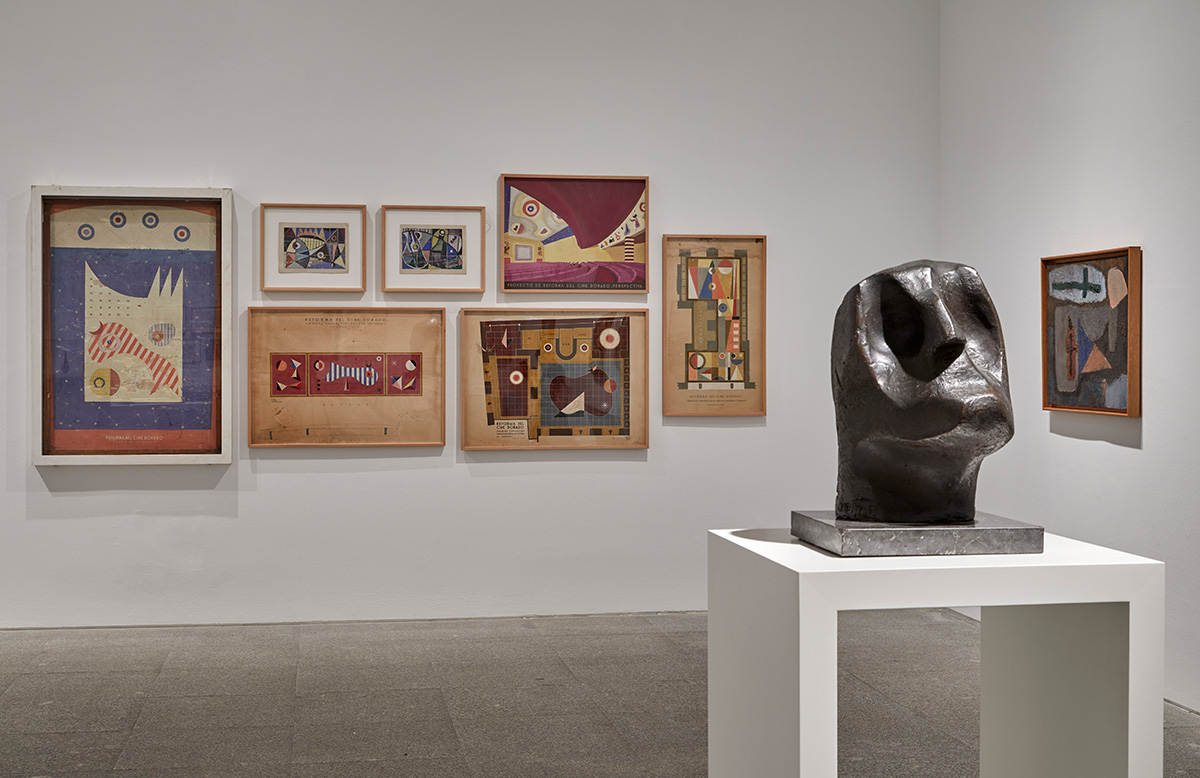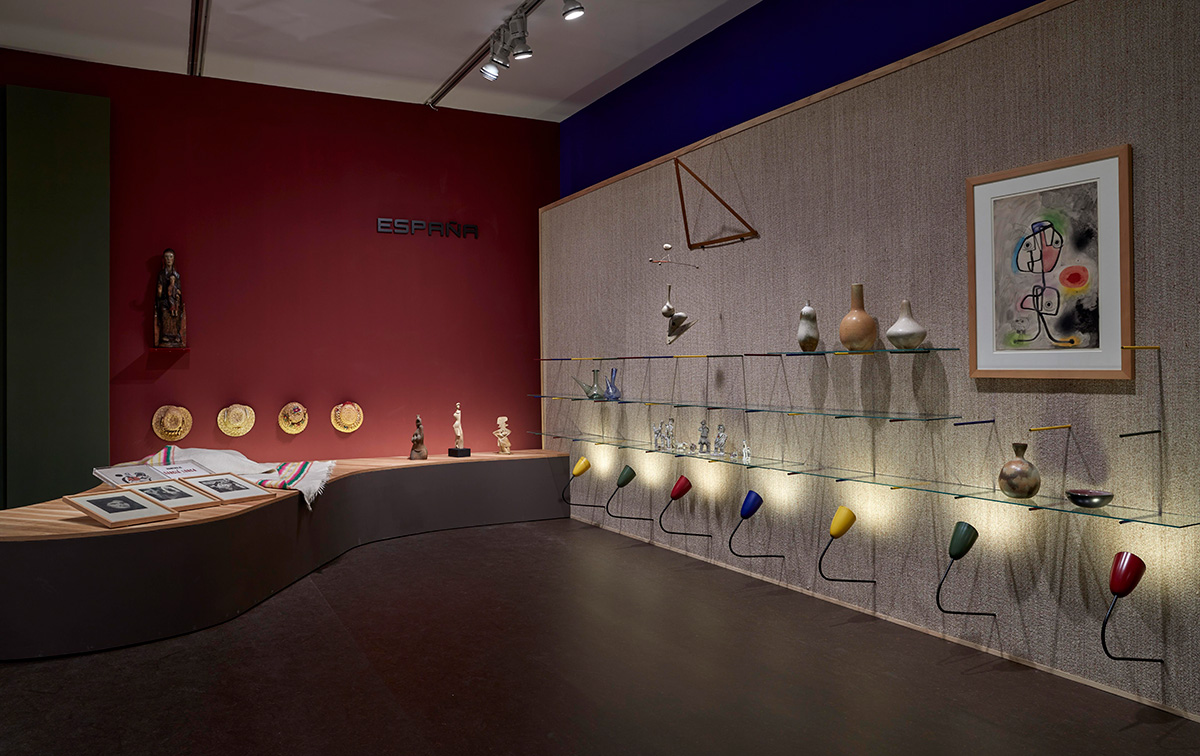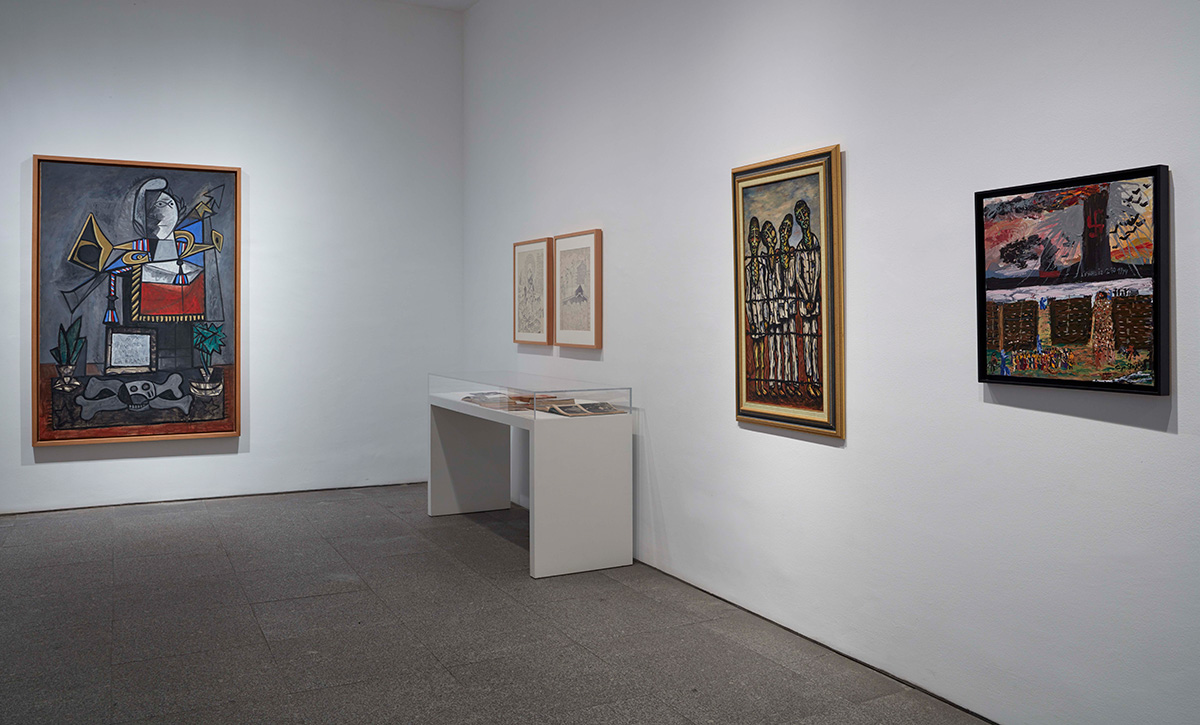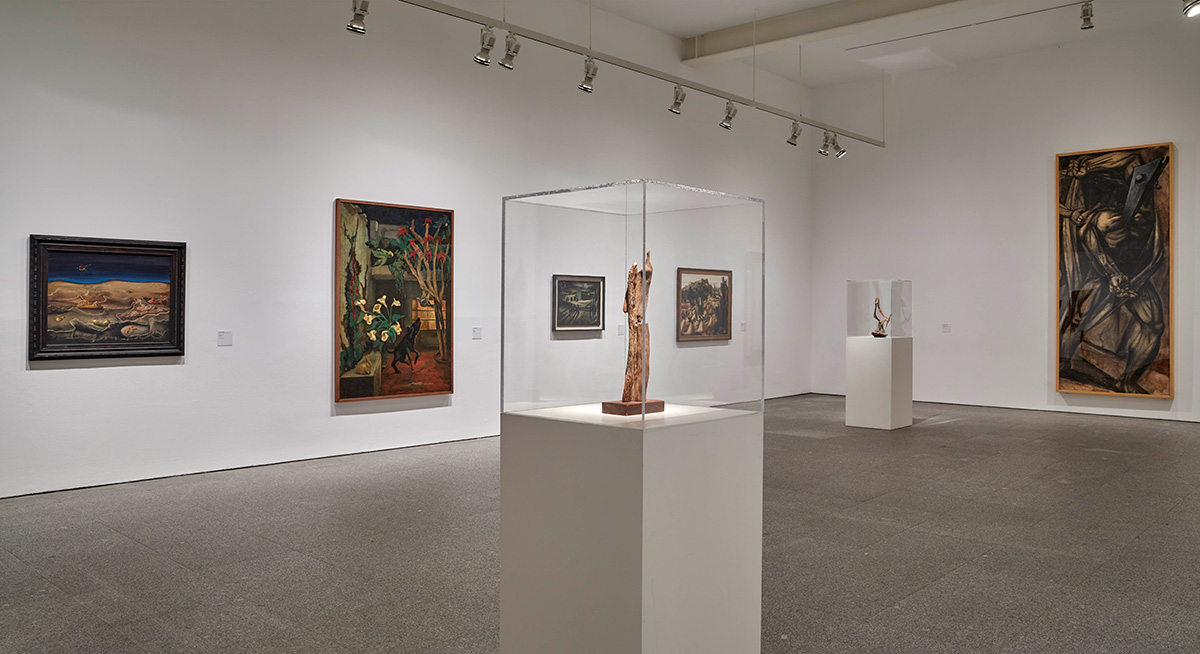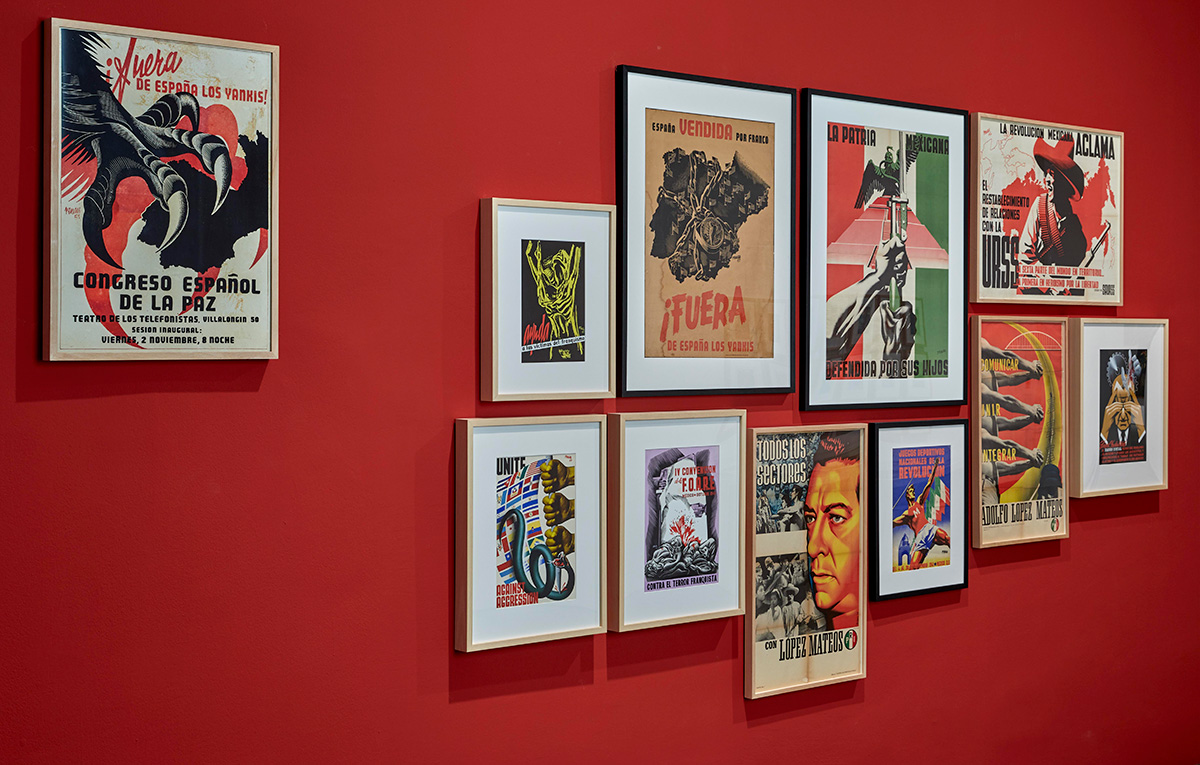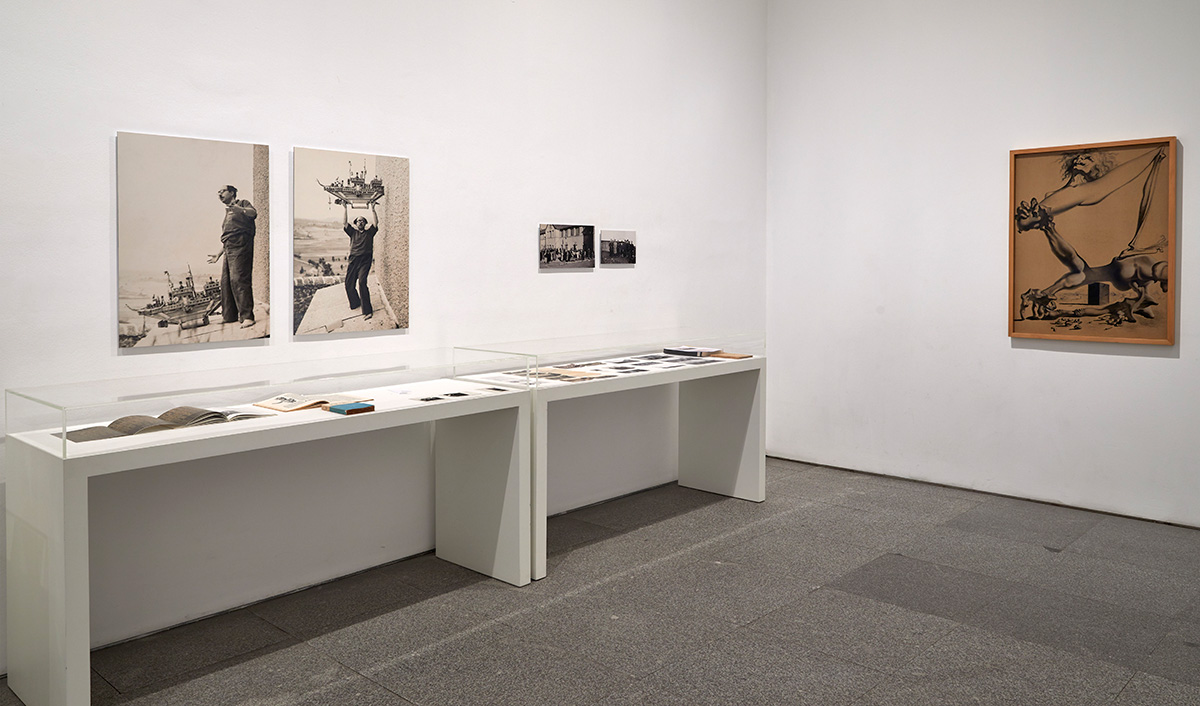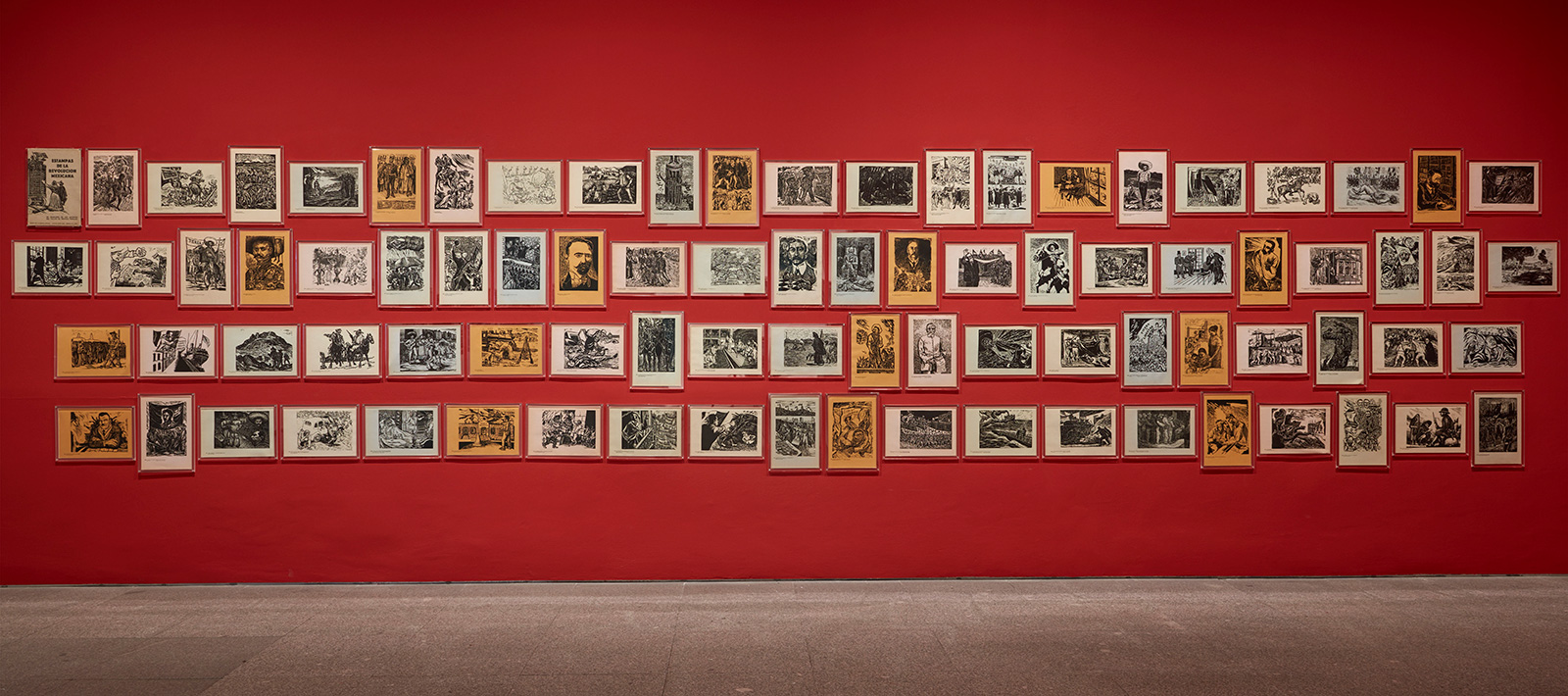ART TRIBUTE: Reina Sofía Museum Collection, Part II
 The Reina Sofía Collection includes works produced between the end of the 19th century and the present day. Today there are more than 23,000 works of art, of which approximately 5% are on display, which include all types of artistic techniques: around 4,000 paintings, 1,600 sculptures, 3,600 drawings, 6,000 graphic art works, 4,800 photographs, 140 installations and 70 video installations, some 450 pieces of film and video, and more than 230 pieces of decorative arts and architecture (Part I).
The Reina Sofía Collection includes works produced between the end of the 19th century and the present day. Today there are more than 23,000 works of art, of which approximately 5% are on display, which include all types of artistic techniques: around 4,000 paintings, 1,600 sculptures, 3,600 drawings, 6,000 graphic art works, 4,800 photographs, 140 installations and 70 video installations, some 450 pieces of film and video, and more than 230 pieces of decorative arts and architecture (Part I).
By Dimitris Lempesis
Photo: Museo Reina Sofía Archive
The Museo Reina Sofía’s Collection new dpresentation opens its doors. Throughout its still short history several partial rearrangements have taken place; some were limited to certain rooms while others offered new angles regarding artists or periods. Visitors will now be able to enjoy this new and comprehensive approach, which embraces the entire museum collection, and includes art from the end of the 19th century to the most recent. The result is the fruit of many years of research and has entailed the work of almost all of the Museum’s departments. The new collection, consisting of some 2,000 artworks, is grouped in different spaces and spread over more than 12,000 square metres. Around 70 percent of the artworks have never before been displayed in the Museum. Many of them have become part of the collection in the last 8 years as a result of donations, acquisitions and deposits. Their integration into the collection has made it possible to examine new themes—the current nature of emigration, colonialism, ecology, the 15-M movement* and gender identity, among others. The representation of women has been significantly expanded, the role of photography and film has been enhanced via the inclusion of hundreds of videos and photos, and architecture has now a place within the Museum’s discourse. Instead of following a chronological order, artworks are presented and grouped thematically, accompanied by considerable bibliographical and archival documentation. Located on Sabatini building’s second floor, a first section delves into the historical moments—between the end of the 19th century and the first quarter of the 20th century—from which artistic avant-garde movements emerged. The fourth floor offers a glimpse into the complex context in which both the creators who remained in Spain and those who went into exile as a result of the Spanish Civil War lived, as well as the contributions made on the cultural and artistic landscape between 1939 and the 1950s, within Spain and abroad. This floor also presents a novel interpretation of the context of art and culture at a time when—after World War II—the United States consolidated its position as the world’s leading power and tried to spread, with varying results, its cultural dominance beyond its borders. Another section, located in Nouvel’s building first floor, brings together art produced in Latin America between 1964 and 1987 and its relationship with Spain, giving an account of the new and influential artistic practices that developed at that time. Jean Nouvel’s building ground floor explores a pivotal moment in the 1980s, marked by the exhibition documenta held in Kassel in 1982, when many key figures for understanding contemporary art emerged. Sabatini’s building ground and first floors delve into the art from the 1990s to today, with a focus on collaborative practices and the reclaimed public spaces and monuments beyond their condition of being merely vestiges of the past. Ecology is another of the themes presented here, along with elements linked to the social struggles that took place to defend public services, the right to housing and opposition to austerity measures.
Episodes 5-8:
Enemies of Poetry: Resistance in Latin America: Inside the context of Latin America in the period spanning the late 1960s to the mid-1980s, a time marked by colonial legacy and a succession of totalitarian regimes, artistic experimentations from the preceding decades would become radicalised and violently situated. There was a desire for critical positioning, to break from disciplines and search for other ways to relate to the world. Artists worked collectively and, with their bodies, occupied streets and created atmospheres and situations; thus, space was the focus of attention for many, and landscapes of underdevelopment became an image of resistance to Western modernity and its economic and political system, a defiance towards its models of consumerism, exploitation and conquest. In addition to questioning the idea that the Latin American neo-avant-garde is peripheral in relation to its North American or European versions, this presentation takes issue with the perspective that assembles a heterogenous geography under the same blanket term. It focuses on a territory that has largely remained fragmented, beyond communities and networks of exchange and denouncement woven by artists, intellectuals and activists — flowing beyond Latin America to disgorge into other continents — or, on the contrary, beyond the alliances created between military governments from different countries. Equally, putting many of these artistic approaches into contact evinces the parallels, influences and affinities between practices and contexts separated by borders.
A Drunken Boat, Eclecticism, Institutionalism and Disobedience in the ‘80s: In the 1980s, different exhibitions sculpted the sensibilities of the time. For the 1982 Documenta in Kassel, the curator Rudi Fuchs contemplated the possibility of titling the exhibition The Drunken Boat, after Arthur Rimbaud’s poem, in reference to an art drifting aimlessly, wandering outside of “style wars”. This absence of hegemonies would end up translating into an eclecticism of forms that defined artistic practices in that decade. Part of historiography interpreted it as a shift towards conservative values, where the absence of history and critique, as well as the recovery of artistic individualism, corresponded to a social and political reality dominated by the Reagan-Thatcher era. The fledgling democracy in Spain would drive an institutionalisation of art that replaced social struggles against Francoism, and within this context the creation of the ARCO Art Fair and the Centro de Arte Reina Sofía came with an intense policy of national and international exhibitions, and a return to painting as the lingua franca. Opposite this apparent conservatism, a series of practices of disobedience rose to the surface, expressing their discontent with institutions and facing crises such as the AIDS pandemic. An art that embraced post-punk attitudes, new versions of feminism and the subversion of bodies.
Apparatus 92. Can History Be Rewound?: Many of the changes that explain today’s world occurred in the 1990s. With the fall of the Berlin Wall in 1989, and the disintegration of the socialist bloc, free-market economic policies expanded, triggering responses from anti-globalisation and alter-globalisation movements, such as that started by the Zapatista Army of National Liberation in Chiapas, Mexico, on 1/1/1994, the same day the North American Free Trade Agreement came into effect. In Europe, the Maastricht Treaty, signed in 1992, was highly complex due to its double slant: on one side, it appealed to a federal Europe and propelled European citizenship, but on the other, it ushered in the move to a single currency, based on neoliberal economic policy. In Spain, six years after it joined the EU, in what was considered an example of successful integration into modernity, the celebrations of 1992 — the Universal Exhibition of Seville, the Barcelona Olympics, Madrid as European Capital of Culture — reflected an eagerness that was blinded to the weaknesses of an economic structure based partly on the housing bubble, which would burst in 2008, marking the beginning of the end for globalised euphoria. Expo ‘92 in Seville was an event conceived to celebrate Spain’s categorical arrival into modernity and served to elucidate the light and darkness of Iberian colonial legacy, as well as enabling an analysis of the inherent relationship that exists between conquest and violence to be carried out. Violence defined by extractivism, by the plundering of history and by the logics of colonialist dispossession, including the exploitation of resources and people, and conflicts of gender and race.
Exodus and Communal Life: The global financial crisis, caused by the housing bubble bursting in 2008, abruptly halted the expansion the Spanish economy had enjoyed since the 1980s, sparking a rise in inequality and instability. The occupy movements taking over squares in 2011 constituted a critical moment in the social response to class difference and the impoverishment of much of the population. These multiple and transversal forms of resistance were inscribed in a cycle of interconnected global uprisings that introduced a logic of the commons in the struggle to rebuild society. Those that camped out in the streets became a metaphor of community, a new form of occupying public space that followed on from the carnival aesthetic of the anti-globalisation cycle. An affirmative form of resistance that set out to collectively rethink the world in which we live. The current geological era is characterised by the far-reaching human impact on the Earth, activity which has engendered sweeping changes to the landscape stemming from the climate crisis, the pandemic and the avaricious consumption of available resources: a reality that debunks the linear time of progress and the need for an interconnected and counter-apocalyptic future; a post-human condition, as Rosi Braidotti interprets it, that incorporates not only other species, but nature as a whole. The works selected in these rooms pinpoint the Mediterranean as a complex geopolitical space, one of the planet’s hot spots and the stage for some of the main conflicts devastating Europe over the past 25 years: the crisis of civilisations, wars and displacements. Exodus and Communal Life is the last chapter in the new presentation of the Museo Reina Sofía Collection, which, in its different bifurcations, works as a visual essay that re-examines the disarray of the twentieth century, to which the material conditions inside of which artworks are produced are not alien. Understood as a symptom and a contextual element of their historical juncture, these works can also serve as a tool to question and overcome it.
The new collection includes artworks made among many others by: Francis Bacon, Rosa Barba, Louise Bourgeois, Georges Braque, Marcel Broodthaers, Miriam Cahn, Alexander Calder, Lygia Clark, Salvador Dalí, Sonia Delaunay, Dora García, Leon Golub, Luis Gordillo, Maruja Mallo, Marta Minujín, Joan Miró, Antoni Muntadas, Juan Muñoz, Helio Oiticica, Pablo Picasso, Ángeles Santos, Cindy Sherman, Lorna Simpson, Hito Steyerl, Dorothea Tanning, Antoni Tàpies and Remedios Varo.
* The anti-austerity movement in Spain is also referred to as the 15-M Movement and the Indignados Movement, was a series of protests, demonstrations, and occupations against austerity policies in Spain that began around the local and regional elections of 2011 and 2012. First starting on 15/5/2011, many of the subsequent demonstrations spread through various social networks such as Real Democracy NOW and Youth Without a Future
Info: Museo Nacional Centro de Arte Reina Sofía, Calle de Santa Isabel, 52, Madrid, Spain, https://www.museoreinasofia.es
